Keeping your top talent on board is more important than ever before.
Forbes reports that the average turnover rate in the US for 2023 is approximately 2.5%. Any guesses for the reason? It’s quitting!
Losing a valuable employee further disrupts a company’s productivity, processes, and customer relationships.
So, what’s the solution? Conducting employee exit surveys.
This article will guide you through the process of conducting effective exit surveys for employees. Plus, you’ll get 55+ must-ask employee exit survey questions to get honest and constructive feedback from your departing staff.
What Are Exit Surveys for Employees?
An employee exit survey is conducted during the employee exit interview. It’s a series of questions employers ask the employees who are leaving.
Unlike exit interviews, which are conducted orally and may not be as candid, exit surveys provide more straightforward and honest answers.
You can use a variety of questions, from open-ended to closed-ended questions, ratings, and NPS.
55+ Employee Exit Survey Questions You Can Ask
Here are the 57 best exit survey questions you can ask in your exit surveys for employees divided into categories. You can use them as they are or modify them to suit your specific requirements.
Employee Exit Survey Questions on Job Satisfaction:
These exit survey questions aim to measure how satisfied an employee was with their job role, responsibilities, expectations, and challenges. For example, you can ask:
- What did you like most about working for the company?
- How clear were the goals and objectives of your job?
- How well did your job match your skills and interests?
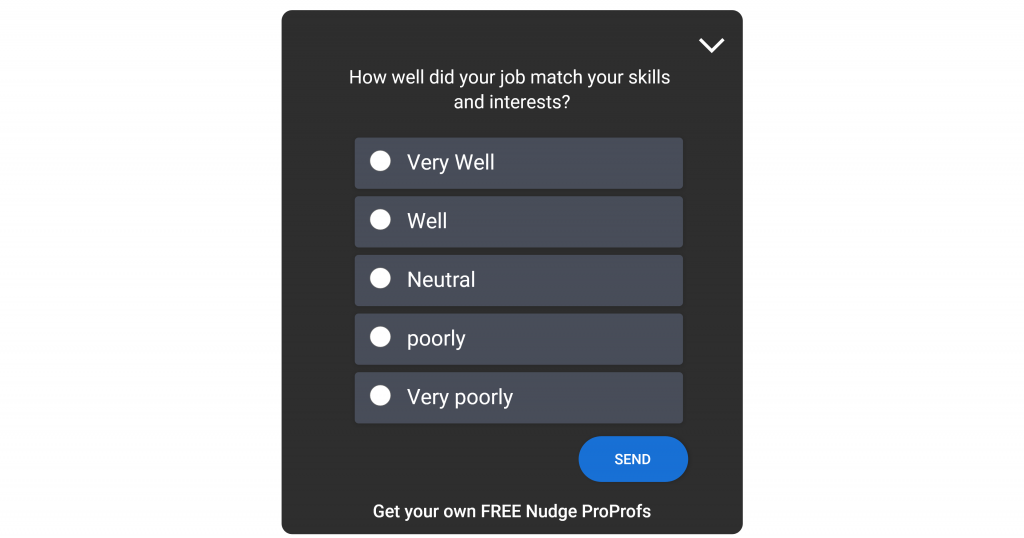
- How did you feel about the workload and pace of your job?
- How much did you learn and grow from your job?
- How did you feel about the recognition and appreciation you received for your work?
- How did you feel about the overall job satisfaction on a scale of 0 to 10?
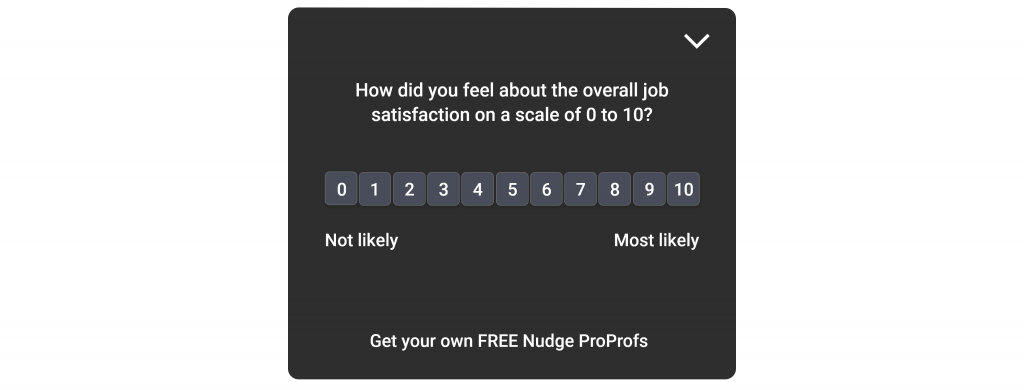
- What did you like least about working for the company?
Employee Exit Survey Questions for Work Culture:
These exit survey questions aim to evaluate how the employee felt about the social aspects of the workplace. For example, you can ask:
- How likely would you recommend working in your job role to others?
- How would you describe the work environment and culture in 3 words?
- How well did your team or department collaborate with other teams or departments in the organization?
- How would you describe the culture and values of your team?
- How comfortable and safe did you feel in the workplace?
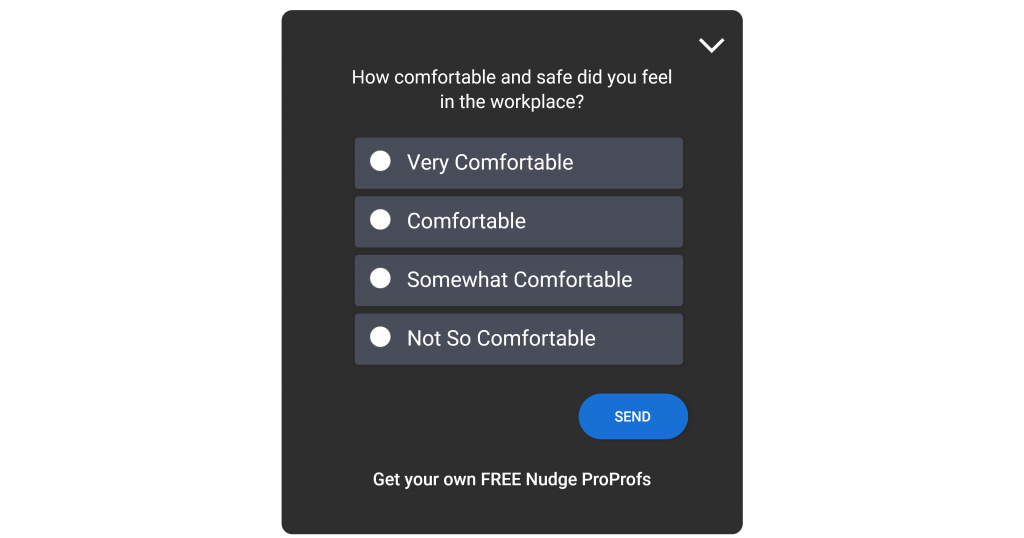
- How well did you collaborate and communicate with others?
- Were you able to handle conflicts or disagreements with your colleagues on your own?
- How much did you enjoy working with your colleagues?
- Did you ever participate in any social or recreational activities with your team and the organization?
- How did you feel about diversity and inclusion in the organization?
You might also like to read: The Best Diversity And Inclusion (DEI) Survey Questions
- Were you able to easily balance your work and personal life?
- How did you celebrate achievements at the workplace?
- What suggestions do you have for improving the organization’s culture?
- Have you ever experienced any discrimination or harassment within the workplace?
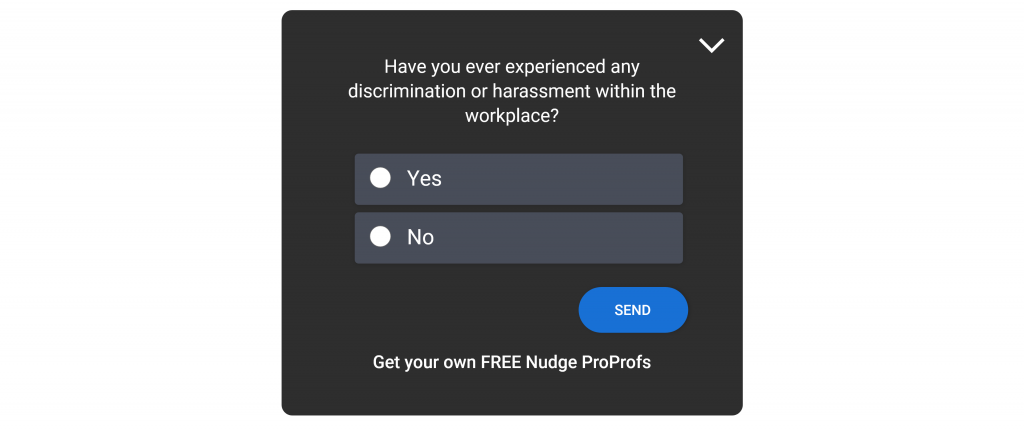
Employee Exit Survey Questions for Management and Leadership:
These questions aim to assess how employees perceived and interacted with the upper management and leadership. For example, you can ask:
- How would you describe your relationship with your manager?
- How did your manager communicate with you?
- How supportive was your manager of your professional development and career growth?

- How fair was the management in their decisions and actions?
- How would you rate the feedback you received from your manager?
- How did your manager handle challenges that occurred in the organization?
- Do you feel the management was accountable for their roles and responsibilities?
- Did the senior management demonstrate organizational values and culture?
- How did you feel about the leadership style and vision of the management?
- How innovative was the upper manager in their strategies and goals?
- How often did you receive recognition from your manager?
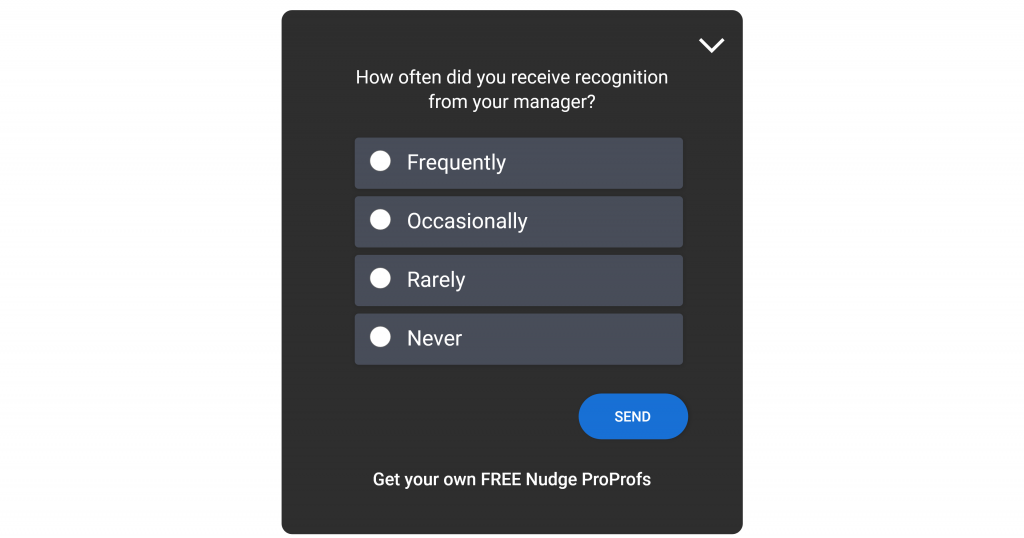
Employee Exit Survey Questions for Career Development:
These exit survey questions aim to help you understand how the employee perceived and pursued their career opportunities and growth within the organization. For example, you can ask:
- Were you given enough opportunities to develop your skills?
- Were you satisfied with the training and development programs provided?
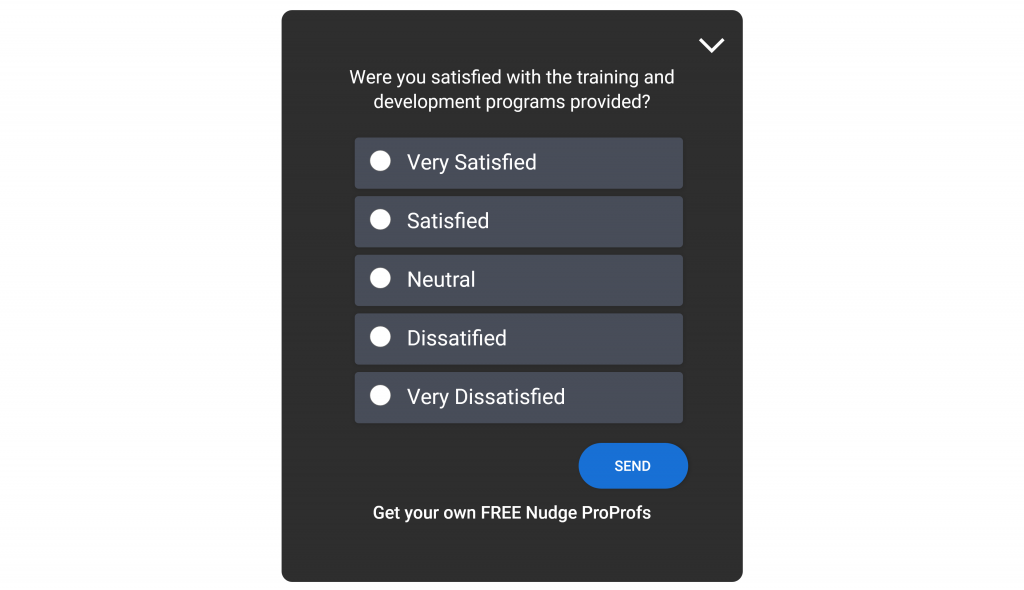
- Did the company invest enough in your professional development?
- Were you satisfied with the level of mentorship provided?
- Were there sufficient opportunities for cross-training and job shadowing?
- Did the company provide any opportunities for exposure to other roles within the organization?
- Did the company support and encourage your pursuit of new opportunities within the company?
- Were there any obstacles to your career advancement within the company?
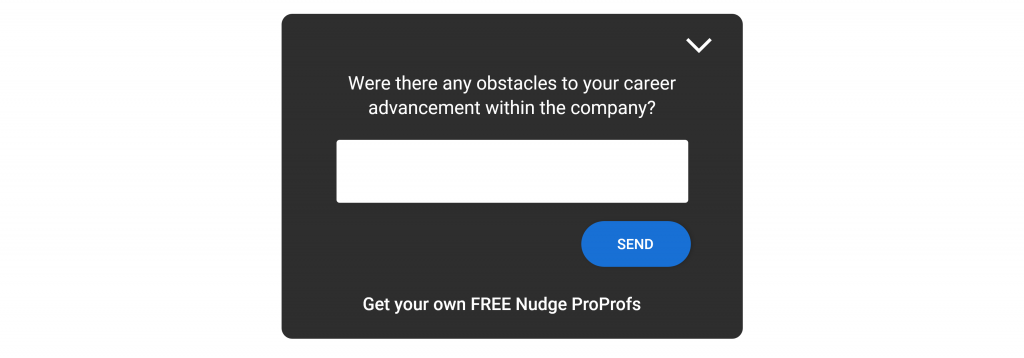
- What could have been done differently on the company’s part to further your professional development and career growth while working here?
Also Read: Best Training Survey Questions to Evaluate Effectiveness
Employee Exit Survey Questions for Compensation and Benefits:
These questions aim to understand how employees viewed the fairness and adequacy of their pay and benefits. For example, you can ask:
- How did you feel about the performance appraisal and reward system?
- How aware were you of the benefits available to you?
- How well did the benefits meet your needs and expectations?
- How easy or difficult was it to access and use the benefits?
- How satisfied were you with your salary and incentives?
- How competitive were your pay and benefits compared to other organizations in the industry?
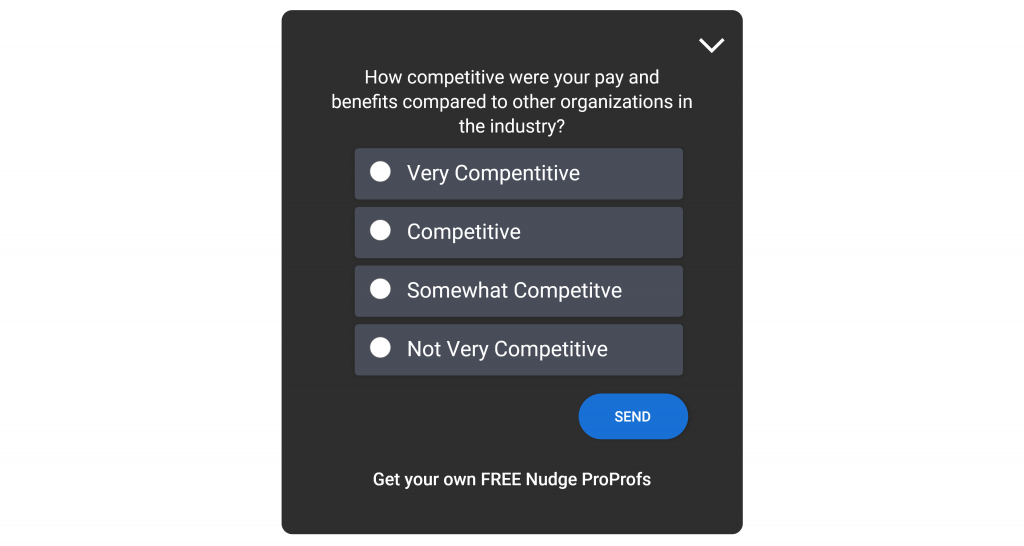
- How transparent and accurate were the calculations of your pay?
- How did your pay and benefits affect your motivation and retention in the organization?
- How did you feel about the performance appraisal and reward system of the organization?
Employee Exit Survey Questions Examining the Reasons for Leaving:
These exit survey questions aim to explore the main factors that influenced employee’s decision to leave the organization and how they would recommend improving the employee experience and retention. For example, you can ask:
- What were the main reasons for your decision to leave the organization?
- What was the most significant factor that influenced your decision to leave the company?
- On a scale of 0 to 10, how likely would you recommend the organization to others as a place to work?
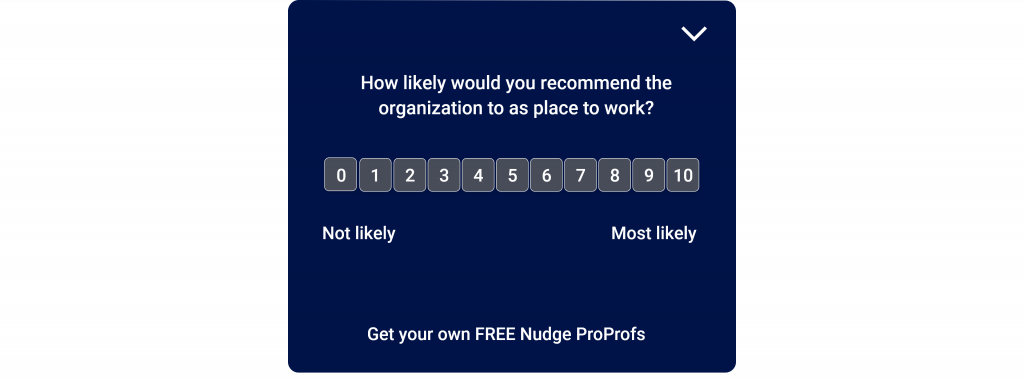
- What are you most looking forward to in your next job or career move?
- What advice would you give to your successor or replacement?
- How likely would you return to the organization if an opportunity arises?
Benefits of Using Exit Survey Questions
Utilizing employee exit surveys can bring many benefits to employers. Some of the main benefits are:
- Identifying the root causes of employee turnover: Gathering exit survey data can be valuable in understanding why your employees decide to leave and the factors that influence their decision.
Armed with this knowledge, you can take steps to address the underlying issues and prevent further turnover.
- Reducing the costs and risks of employee turnover: These questions can help you reduce the costs and risks associated with employee turnover, such as loss of productivity, knowledge, skills, customers, reputation, etc.
You can save money and resources by retaining and engaging employees and maintaining their competitive edge.
- Understanding the strengths and weaknesses of the company: Asking employees about their reasons for leaving can provide valuable insight into the strengths and weaknesses of your company’s culture, policies, and practices.
This information is crucial in understanding how these factors impact employee satisfaction, engagement, loyalty, and performance and can help you improve and optimize your workplace environment.
- Improving employee satisfaction and loyalty: Exit survey questions can also help you improve employee engagement, satisfaction, and loyalty by showing that you care about your employees, value their opinions and feedback, and are willing to learn and improve.
- Enhancing brand reputation: Gathering feedback from employees who are leaving your company can positively impact your brand and reputation. It shows you are a responsible, respectful, and attentive employer who treats their staff fairly while providing them with opportunities and support for their career advancement.
It can help you attract and retain top talent and enhance your company’s credibility and reputation, which is invaluable in the long run.
Also Check: Employee Satisfaction Surveys: Complete Guide To Boost Turnover
Tips While Conducting Exit Surveys for Employees
Conducting employee exit surveys can be a challenging and sensitive task, as it involves dealing with employees who are leaving the company, and asking them personal and potentially uncomfortable questions.
Here are some tips and best practices for conducting exit surveys for employees:
Tip #1: Timing and Method Matters
The best time to conduct the exit survey is to do it close to the employee’s last day of work, but not on the same day, as the employee may be busy or emotional.
The best method to conduct the exit survey is online via email, as it allows employees to answer the questions at their convenience.
Online feedback survey platforms like Qualaroo offer a comprehensive solution for administering surveys professionally and efficiently. You can easily create and customize your exit survey and then distribute it to employees via email or on internal communication channels to seamlessly collect feedback.
Tip #2: Preserving Anonymity and Ensuring Confidentiality
One of the main reasons employees may not respond to exit surveys or provide honest and accurate answers is the fear of retaliation or repercussions from the employer or co-workers.
It is essential to ensure the confidentiality and anonymity of the exit survey responses and to communicate this clearly and explicitly to employees.
Employees should be assured that their responses will not be shared or disclosed to anyone without their consent and will not affect their benefits or future relations with the company.
Tip #3: Unveiling the Untold With Open-Ended Questions
While closed-ended questions can provide quantitative and objective data, open-ended questions can provide qualitative and subjective data, which can reveal more details and insights into employees’ experiences, opinions, and feelings.
Here’s a useful read: Qualitative vs. Quantitative Research: How to Get the Best of Both Worlds
It is advisable to ask open-ended questions to elicit more details and insights from employees and to encourage them to elaborate and explain their answers.
For example, instead of asking, “How satisfied were you with your job role and responsibilities?” ask, “What did you dislike about your job role and responsibilities?” and, “What did you like about your job role and responsibilities?”
When it comes to asking open-ended questions, Qualaroo can be your ideal choice. This user-friendly tool enables you to create your own exit survey from scratch and tailor it to your specific needs.
Tip #4:
Branching logic can improve the relevance, personalization, and engagement of the exit survey for employees by avoiding irrelevant and redundant questions.
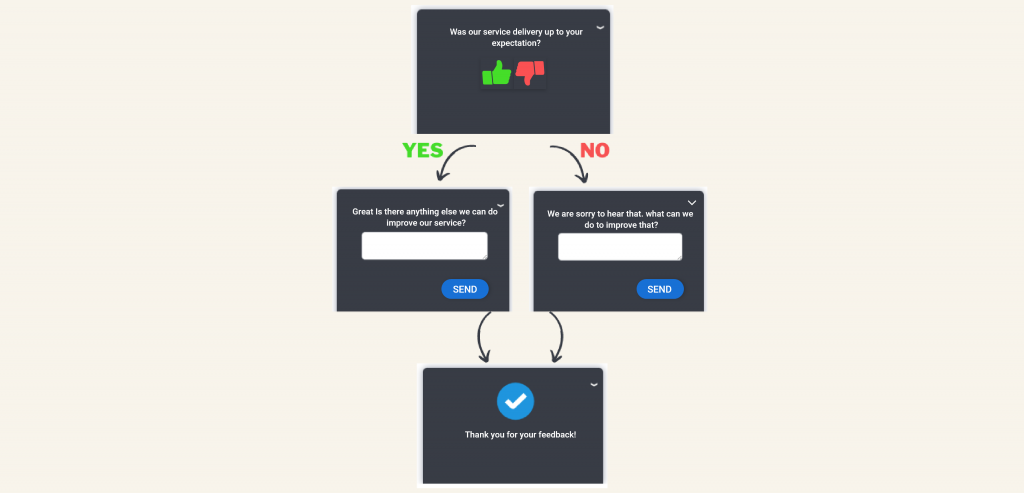
For instance, if an employee states they’re leaving the company due to personal or family reasons, the exit survey can skip asking questions about their new job and, instead, inquire about their personal or family situation or needs.
Tip #5: Capturing Employee Sentiment and Satisfaction
One of the main goals of exit surveys is to understand employees’ sentiments and satisfaction levels with various aspects of their job and company.
You can utilize Qualaroo’s AI-powered sentiment analysis feature to automatically gauge employee sentiments.
It can help to identify the areas of strength and weakness and the opportunities for improvement.
Tip #6: Expressing Gratitude and Good Wishes to Nurture Connections
The exit surveys are an opportunity to express gratitude and appreciation for their contributions to the organization and to wish them well in their future endeavors.
It is crucial to thank the employee for their time and participation in the exit survey and to acknowledge and appreciate their work and accomplishments while they were with the company.
Additionally, it is essential to express good luck and success for their next career move or transition and to maintain a positive and professional relationship with them.
Recommended Post: 9 Best Employee Exit Survey Software To Streamline Offboarding
Maximize Employee Retention with Effective Exit Surveys
Employee exit surveys are an excellent tool for gathering information from departing employees that can lead to significant insights and improvements in retention, engagement, satisfaction, and performance.
Some of the clear benefits of using exit survey questions include identifying the root causes of employee turnover, understanding the strengths and weaknesses of the company’s culture, and improving employee engagement and satisfaction, among others.
By utilizing a professional employee exit survey software like Qualaroo, you can successfully conduct exit surveys for employees and benefit from the wealth of data they collect.
FREE. All Features. FOREVER!
Try our Forever FREE account with all premium features!







